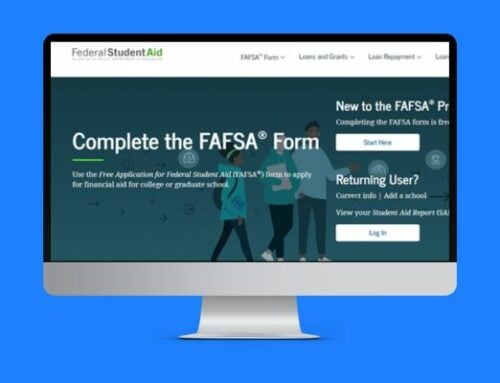5 Mistakes to Avoid When Splitting the GI Bill
The Post 9/11 GI Bill is a fantastic benefit for those who served in the military after 9/11/2001. The ability to transfer the benefit to military dependents makes it even better. It also makes the planning to use it most effectively much more challenging. Many people decide to simply split their benefit between multiple children. Here are 5 mistakes you should consider before doing that.
Background
The Post-9/11 Veterans Educational Assistance Act of 2008 provides military members who served at least 90 days on active duty after September 10, 2001, and received an honorable discharge Post 9/11 GI Bill benefits. These include tuition and fees (up to the 100% cost of in-state tuition), monthly housing allowance, and a book stipend. The Services created rules allowing this benefit to be transferred to dependents as a retention tool.
Cost of College
When determining how to effectively use the GI Bill, especially if you’re splitting it, it’s important to understand what you would have paid out-of-pocket without the GI Bill. You can then compare the value to determine how to use it. Determining what you’ll actually pay can be a challenge, but it starts with the Free Application For Student Aid (FAFSA). You’ll get your Expected Family Contribution (EFC) from the FAFSA. There are numerous calculators that will estimate your EFC including this one from the US Department of Education. Schools also have a Net Price Calculator which will give you an estimate of what you’d end up paying.
Armed with this information, you can start to build your plan. Here are 5 mistakes or considerations you should understand as you do that.
Mistake 1: Not using the benefit for you or your spouse
If you or your spouse could use the GI Bill and meaningfully improve your income over the rest of your lives, that may be a better plan than giving it to your children. If you believe you could improve your salary by $30,000 per year for 20 to 25 years, you’d earn an additional $600,000 to $750,000. The difference in earnings could be used to pay for college for your children and also improve your quality of life.
Mistake 2: Not understanding how your Expected Family Contribution could change with your income
The biggest factor in whether you’ll qualify for financial aid is parents’ income. If your income will increase significantly in the future, it may make sense to wait to use the GI Bill. Let’s look at an example: E-7 with 2 children (Sr in high school, 7th grader) & spouse who is not currently working outside the home. The income used for the FAFSA will be basic pay and any bonuses, but it does not include BAH so the oldest child is likely to qualify for some need-based aid. Fast forward 5 years, the E-7 recently retired and has gotten a job that pays 20% more than their military salary. They also get retirement pay and the spouse has also returned to work. Their income is much higher and if the retiree qualified for VA disability payments, those will be added also. The EFC for the younger child will be (significantly) higher. Splitting the GI Bill evenly would mean the family will pay more out of pocket for the second child.
Mistake 3: Not understanding the school’s financial aid model
Colleges operate based on a few different funding models. Some schools provide assistance primarily based on financial need while others offer scholarships based on student achievement. Let’s look at a few examples:
Ivy League & elite private schools – These schools typically have huge endowments and operate “need-blind” meaning if you can get in they’ll typically provide aid for costs above your EFC. This can be a great deal for lower-income families. They don’t offer merit scholarships so you’ll pay if their formula calculates you can afford it.
Smaller Private Schools & some State Schools – These schools are typically competing for the best students so high-achieving students can get significant merit aid. Attracting top student talent allows them to move up the rankings so they can compete better. Many schools publish their SAT/ACT and GPA matrix that will show you exactly what type of scholarship you are likely to receive. The goal here is to be in the top 25% of admitted students to get the most merit aid.
Public Schools – In-state tuition typically has a lower listed price than private schools, but they may not be as generous with either need-based or merit aid. Attending a public school out of state may be even more expensive than a private school because they are less likely to meet the out-of-state need or offer merit scholarships.
Understanding your EFC and your student’s competitiveness can allow you to focus on colleges that will meet their needs while not being unaffordable or requiring excessive debt which could allow you to save your GI Bill benefit for another child.
Mistake 4: Not considering differences between the children
Each child is unique with different talents and ambitions. This may impact what they choose to do or how they might use the GI Bill. It is important to factor this into the decision with the school’s financial aid model. For families whose children have a significant gap in ages this will be more difficult. If you have a high-achieving student who might be able to earn significant merit aid it might make sense to not use the GI Bill for them. That is as long as they aren’t planning to try to go to an elite school (Ivy League and some others) that don’t offer merit aid.
Mistake 5: Not factoring Basic Allowance for Housing and Yellow Ribbon into the calculation
The Basic Allowance for Housing (BAH) benefit and Yellow Ribbon program can add significant value to the GI Bill. BAH for schools in larger cities on the east or west coast will typically be much higher than for a midwestern, small-town school. Some families will use the GI Bill for tuition for an older child, but make the child pay for their room and board. They then take the BAH and invest it to use for their younger children.
The GI Bill only covers costs up to the tuition price of the most expensive state school. Many private schools have higher costs. Yellow ribbon schools provide additional money (which is matched by the VA). It can be hundreds of extra dollars up to full tuition. This can vary from school to school and even programs within a school. Some schools cap the number of yellow ribbon students they will provide funding for while others are unlimited. You can find more information here.
The Post-9/11 GI Bill and its transferability is a great benefit potentially worth into the hundreds of thousands of dollars. There are many factors to consider when deciding how to best use the GI Bill. This is especially true if you’re trying to stretch the benefit across multiple people. Understanding these common mistakes should help.
If you’d like to know more about our college planning service, you can check it out here. If you’d like to discuss your situation you can also schedule a no-cost, 30-minute call.




